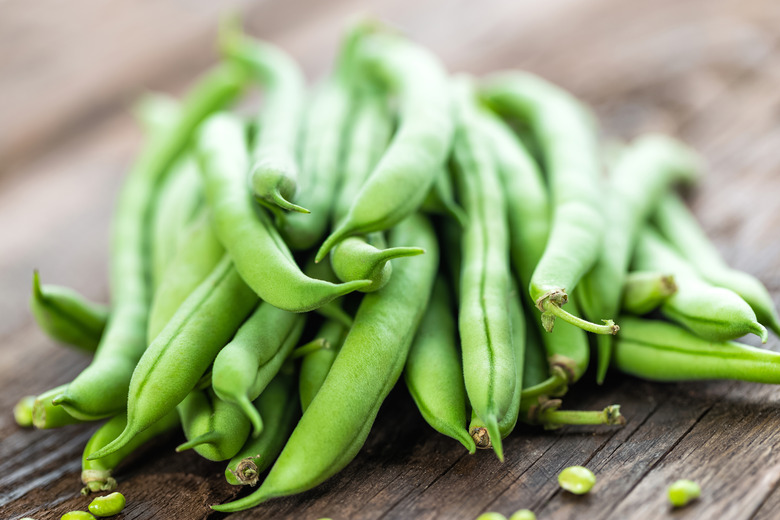Differences Between String Beans And Green Beans
The designations "green" and "string," when applied to annual garden beans (Phaseolus vulgaris), refer to exactly the same plants. To confuse matters even more, they're also known as snap beans, because of their distinctive sound they make when snapped as a prep step before cooking or tossing raw into salads. Green snap beans are eaten before the seeds inside have matured, which distinguishes them from other beans that are grown for their edible seeds.
Because older snap bean cultivars had stringy fibers, they became known as "string" beans. New cultivars, however, are "stringless" and tender. Iowa State University identifies Blue Lake and Kentucky Blue as stringless cultivars.
Even though all snap beans are still called string beans, the differences between string beans and green beans are non-existent. Whatever you choose to call them, string, green or snap beans are the ideal easy-grow vegetable for non-green thumbs.
String Beans Vs Green Beans
In days gone by, the stringy fibers running down bean pods' seams, or sutures, were manually removed. The bean stringer twisted one of a bean's tips until it snapped, pulled it down the seam to unzip the fiber and repeated the exercise in reverse with the other tip. Except for heirloom bean cultivars, the fiber and snapping are no more; thanks to decades of hybridizing, modern green beans have no strings attached. Their descriptive name of "string bean," however, refuses to die.
Selecting the Planting Site
in a spot where they'll receive at least six hours of daily sun. A well-draining spot with loose, sandy loam soil is best. If heavy, water-absorbing clay soil is all that's available, amend it with a 3-inch layer of organic compost.
Prepare the planting site by loosening the upper 6 inches of soil with a spade or rotary tiller. Break up large clods, and remove stones or other debris. Distribute the compost evenly over the loosened soil. Till or spade the compost into the soil until the two are thoroughly incorporated.
Sowing the Seeds
Sow green snap bean seeds after the soil temperature reaches 65 degrees Fahrenheit. To sow the seeds, run the corner of a hoe along the soil in a 1-inch deep furrow. Space the seeds about 2 inches apart and cover them with the removed soil. Firm the soil lightly with the flat side of the hoe, and then water well. For a large crop, space multiple furrows 12 inches apart.
Caring for Green Beans
Keep the soil moist until the seeds germinate. When the seedlings reach 6 inches, mulch around them with a 1/4 inch layer of herbicide-free grass clippings, replenished with fresh ones as they die down.
Fertilizing Snap Beans
As legumes, string beans pull nitrogen from the air and channel it to root nodules, or bumps, filled with the soil-borne Rhizobia bacteria. The Oregon State University Extension Service explains that these bacteria change the nitrogen into a form the bean plants use to manufacture their pods. Thanks to this symbiotic collaboration, beans grown on organically rich or compost-amended soil typically need less nitrogen fertilizer than non-leguminous plants.
Watering Snap Beans
Like other vegetables, string beans typically need 1 inch of rain or supplemental water per week. Increase the amount when the average temperature exceeds 60 degrees Fahrenheit, figured by adding the daytime high and nighttime low and dividing the total by 2. Bonnie Plants recommends giving the beans an extra 1/2 inch of water for every 10 degrees the average climbs above 60 F.
As an example, when the highest weekly daytime temperature peaks at 98 F and the weekly nighttime low is 80 F, for a total of 178, the average temperature is 89 F. That's almost 30 degrees above 60 F, and the beans need another 1 1/2 inches of water, for a total of 2 1/2 inches if it hasn't rained.
Tip
One inch of water equals about 6 gallons per 10 square feet of soil. To calculate weekly rainfall, use a rain gauge. Measure the rain it collects at the end of the week and water the beans only enough to make up the difference between the rainfall and the total amount they need.
